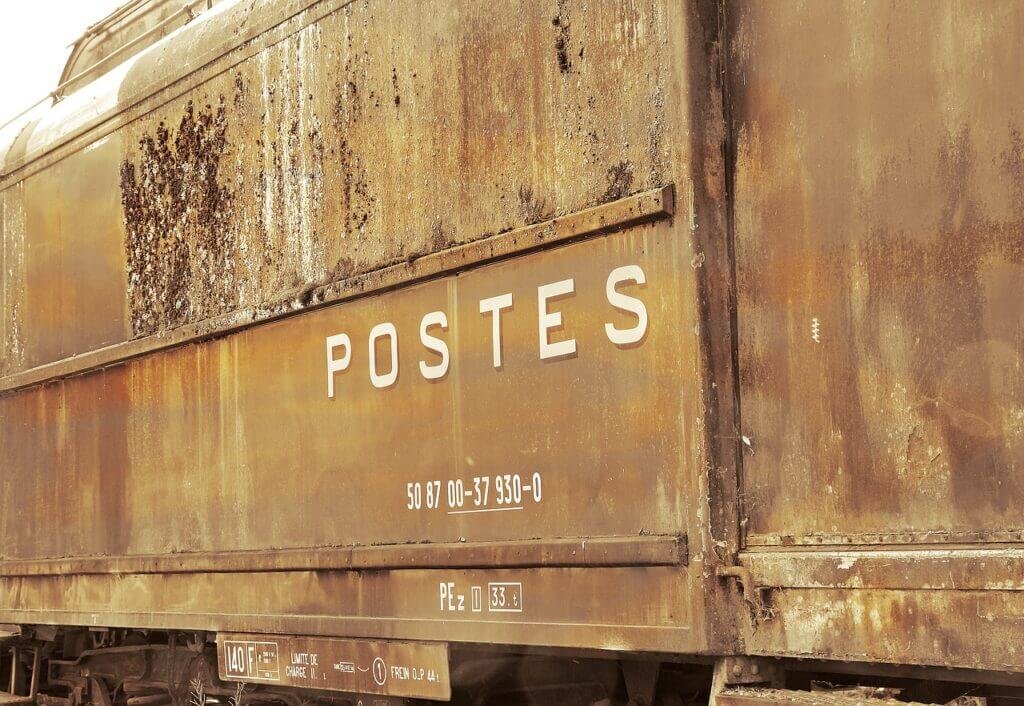Do you ever wonder what the best way is to keep your food and supply stockpile organized and fresh? Well, you’re in luck! In this article, we will explore the importance of rotating your stockpile and maintaining its overall quality. You’ll discover useful tips and strategies on how to effectively manage your inventory and ensure that your stockpile remains in optimal condition for future use. So, whether you’re a seasoned prepper or just starting out, let’s dive into the world of stockpile maintenance and find out how to keep your supplies in top shape.

Assessing Your Stockpile
Take Inventory of Your Stockpile
The first step in effectively maintaining your stockpile is to take a thorough inventory of all the items you have. This involves going through each shelf, cupboard, and storage area to identify what items you have and how much of each item you possess. Having a detailed inventory will not only help you keep track of your supplies but also allow you to plan your meals and restock strategically.
Check Expiration Dates
Once you have taken inventory, it’s crucial to check the expiration dates of all the items in your stockpile. Expired food can lead to health risks and can significantly impact the taste and quality of your meals. Make it a point to regularly assess the expiration dates and remove any expired items from your stockpile. If you come across items nearing their expiration dates, consider using them in your meals sooner rather than later.
Organize by Category
To maximize the efficiency of your stockpile, it is essential to organize your items by category. This can be done by grouping similar items together, such as canned goods, grains, spices, and condiments. By categorizing your stockpile, you will have a better understanding of what items you have in abundance, what items are running low, and what items you may need to restock.
Assess Shelf Life of Different Foods
Different foods have varying shelf lives, and it’s crucial to be aware of this when maintaining your stockpile. Some non-perishable food items, such as canned goods and dried fruits, can have a relatively long shelf life, while others, like oils and nuts, may have a shorter lifespan. Understanding the shelf life of each item in your stockpile will help you plan for rotation and replacement effectively.
Storage Strategies
Use First In, First Out (FIFO) Method
One of the most effective strategies for stockpile maintenance is implementing the First In, First Out (FIFO) method. This means using the oldest items in your stockpile first and placing newer items towards the back. By doing this, you ensure that your stockpile remains fresh and that none of the items go to waste. Incorporating the FIFO method into your storage system will help you keep track of expiration dates and make it easier to rotate your supplies regularly.
Consider Temperature and Humidity
Temperature and humidity can greatly impact the shelf life of your stockpile items. Store your food and supplies in a cool, dry place to prevent spoilage and maintain their quality. Avoid storing items in areas prone to temperature fluctuations or high humidity levels, such as near windows or in basements. By controlling the storage environment, you can extend the shelf life of your stockpile.
Inspect Storage Containers
Proper storage containers are essential for maintaining the freshness and safety of your stockpile. Regularly inspect your containers for any signs of damage, such as cracks or leaks, as these can compromise the quality of your stored items. Invest in sturdy, airtight containers that are specifically designed for food storage. Clear containers also allow you to easily see the contents and monitor the quantities of each item.
Use Proper Sealing Techniques
Keeping your stockpile properly sealed is crucial to prevent moisture, air, and pests from damaging your supplies. Use resealable bags, airtight containers, or vacuum-sealing techniques to ensure that your food and supplies stay fresh for a longer period. Additionally, label each container with the date of purchase or expiration to help you keep track of rotation and avoid using expired items.

Rotation Schedule
Establish Regular Stockpile Check-ups
Maintaining a regular stockpile check-up routine is essential for the long-term storage of your food and supplies. Set aside specific times throughout the year to go through your stockpile, assess the inventory, and perform necessary rotations and replacements. By dedicating time to stockpile maintenance, you ensure that your supplies remain fresh, safe, and ready for consumption.
Create a Rotation Calendar
Creating a rotation calendar is an effective way to stay organized and keep track of your stockpile maintenance tasks. Identify how often you need to rotate each category of items and mark specific dates on the calendar accordingly. This ensures that you are consistently monitoring your stockpile and prevents items from being forgotten or unused for an extended period.
Rotate Based on Shelf Life
As mentioned earlier, different food items have varying shelf lives. When rotating your stockpile, prioritize using items that are closest to their expiration dates. This practice allows you to avoid wasting any food while also ensuring that you are consuming the oldest items first. By adhering to a proper rotation schedule based on shelf life, you maintain the quality of your stockpile and reduce the possibility of consuming expired items.
Manage Excess Stock
While it’s important to have a well-stocked supply of food and essentials, it’s equally crucial to manage excess stock effectively. Regularly assess your stockpile to determine if you have an overabundance of certain items. If so, consider donating them to local food banks, shelters, or charities. By managing excess stock, you not only maintain a balanced and efficient stockpile but also contribute to the well-being of your community.
Food Preservation Techniques
Canning
Canning is a popular food preservation method that allows you to store perishable items for an extended period. By using heat and airtight containers, you can effectively seal and preserve a wide range of foods, including fruits, vegetables, and even meats. Canned foods can have a long shelf life and are a valuable addition to any stockpile.
Dehydrating
Dehydrating is a technique that extracts moisture from food, significantly extending its shelf life. Fruits, vegetables, herbs, and even meats can be dehydrated and stored in airtight containers or vacuum-sealed bags. Dehydrated foods retain their nutrients and are lightweight, making them an excellent choice for long-term storage and emergency preparedness.
Freezing
Freezing is another effective method of preserving food for an extended period. Many perishable items, such as meats, dairy products, and certain fruits and vegetables, can be frozen to maintain their quality and freshness. Invest in a reliable freezer and use freezer-safe containers or bags to store your frozen items. Proper labeling and dating of frozen items will help you keep track of their storage time and usage.
Vacuum-sealing
Vacuum-sealing is a popular method of food preservation that removes air from the packaging, preventing spoilage and freezer burn. Invest in a vacuum sealer to securely seal your food items, whether they are raw ingredients or ready-to-eat meals. Vacuum-sealed packages not only maintain the quality of the food but also save space in your storage area.

Emergency Preparedness
Designate an Emergency Kit
In addition to your regular stockpile, it’s essential to have a designated emergency kit for unexpected situations. Include essential items such as flashlights, batteries, a first aid kit, a portable radio, and other emergency supplies. Keep this kit easily accessible and regularly check its contents to ensure everything is in working order.
Include Non-Perishable Items
When stocking your emergency kit, focus on including non-perishable items that can sustain you during a crisis. Canned goods, dried foods, granola bars, and meal replacement shakes are excellent options. Make sure to rotate these items periodically to maintain their freshness and quality.
Store Water Safely
Water is a critical resource during emergencies, so it’s important to store it safely. Use food-grade containers that are specifically designed for water storage. Rotate your water supply every six months to prevent the growth of bacteria and ensure the water remains fresh and safe to consume.
Replace Consumables Regularly
Regularly reviewing and replacing consumables in your emergency kit is vital. Check expiration dates on items such as medications, batteries, and food items, and replace them as needed. Staying attentive to the expiration dates of the items in your emergency kit ensures that you are prepared for any situation.
Maintaining Hygiene and Safety
Keep Storage Area Clean
A clean storage area is vital for maintaining the hygiene and safety of your stockpile. Regularly clean shelves, containers, and storage spaces to remove any dust, dirt, or potential contaminants. Pay attention to areas that are often overlooked, such as corners, crevices, and the undersides of shelves.
Prevent Pest Infestations
Pests can wreak havoc on your stockpile, contaminating your food and rendering it unsafe to consume. Take proactive measures to prevent pest infestations by ensuring your storage area is clean, sealing all cracks and gaps, and using pest repellents or traps if necessary. Regularly inspect your stockpile for signs of pests, such as droppings or chewed packaging.
Practice Safe Handling and Preparation
Maintaining hygiene and safety extends beyond storing your stockpile; it also applies to handling and preparing your food. Wash your hands thoroughly before handling any food items, and be mindful of cross-contamination. Use separate cutting boards and utensils for raw and cooked foods to prevent the spread of bacteria. By practicing safe handling and preparation, you minimize the risk of foodborne illness.
Label and Date Items
Labeling and dating each item in your stockpile is a simple yet effective practice for maintaining organization and ensuring the freshness of your food. Clearly mark the contents of each container or package and indicate the date of purchase or expiration. This allows you to easily identify and rotate items when needed, preventing the consumption of expired or spoiled food.
Strategies for Usage
Plan Meals Around Stockpile Items
To make the most of your stockpile, consider planning your meals around the items you have. Take inventory of your supplies and identify recipes that incorporate those ingredients. This practice not only helps you utilize the items in your stockpile but also prevents the need for additional grocery shopping.
Implement a Meal Rotation System
Similar to the FIFO method for storage, implementing a meal rotation system ensures that all your stockpile items get consumed regularly. Create a meal plan that rotates through different categories of items, ensuring that nothing goes unused for an extended period. This system allows you to maintain variety in your meals and prevents monotony.
Regularly Practice Cooking with Stockpile Foods
To become comfortable and efficient in using your stockpile items, make it a habit to regularly cook with them. Experiment with different recipes and techniques to familiarize yourself with the flavors and textures of the stored foods. By practicing cooking with stockpile foods, you not only optimize your supplies but also gain valuable culinary skills.
Educate Yourself on Food Storage Tips
Continuously educate yourself on food storage tips and best practices to enhance your stockpile maintenance skills. Stay updated on the latest recommendations for storing different food items and learn about new preservation techniques. Knowledge and awareness will empower you to make informed decisions regarding your stockpile and optimize its longevity.
Considerations for Specific Foods
Rotate Perishable Foods More Frequently
Perishable foods, such as fresh produce, meats, and dairy products, have a shorter shelf life compared to non-perishable items. To avoid wastage and ensure food safety, prioritize consuming and replenishing perishable items more frequently. Incorporate these items into your meal plans and shop accordingly to maintain a steady supply.
Recognize Signs of Spoilage
Knowing the signs of spoilage is crucial for maintaining the quality and safety of your stockpile. Educate yourself on the visual, olfactory, and tactile cues that indicate food has gone bad. Mold, unusual odors, or changes in texture are signals to discard the item immediately. Regularly inspect your stockpile for any signs of spoilage and remove any compromised items promptly.
Adapt Storage Methods for Different Foods
Different foods require different storage methods to maintain their quality. Some items may require refrigeration, while others may need to be stored in a dry, cool place. Research the optimal storage conditions for each item in your stockpile and adjust your storage methods accordingly. Adapting storage methods ensures the longevity of your supplies and preserves their nutritional value.
Balance Nutritional Needs
When planning and maintaining your stockpile, consider the nutritional needs of yourself and your family. Strive for a well-rounded stockpile that includes a variety of food groups, providing essential nutrients for overall health. Incorporate items that are rich in protein, carbohydrates, healthy fats, vitamins, and minerals to balance your nutritional intake during times of need.
Emergency Stockpile Refresh
Regularly Refresh Your Stockpile
Over time, stockpile items may reach their expiration dates or lose their quality. Regularly refresh your stockpile by assessing the inventory, discarding expired items, and replenishing any necessary supplies. Set reminders or incorporate stockpile refreshment as a part of your rotation calendar to ensure that your stockpile remains reliable and up to date.
Donate or Replace Expired Items
Items that have reached their expiration dates or are no longer suitable for consumption can be replaced or donated. Consider donating non-perishable items that are still within their expiration dates to local food banks or charitable organizations. By doing so, you contribute to community welfare while maintaining an efficient stockpile.
Review and Update Your Stockpile Strategy
Periodically reviewing and updating your stockpile strategy is important to adapt to changing needs and circumstances. Assess your lifestyle, dietary preferences, and potential emergencies that may arise. Make adjustments to your stockpile inventory, storage methods, and rotation schedule accordingly. Staying proactive allows you to maintain a stockpile strategy that aligns with your current situation.
Stay Informed About Changing Needs
It’s essential to stay informed about changing needs that may impact your stockpile. Consider factors such as family size, dietary restrictions, and evolving emergency preparedness guidelines. Regularly check reliable sources for updates on recommended stockpile items, quantities, and storage techniques. By staying informed, you ensure that your stockpile remains relevant and effective.
Conclusion
Prioritizing the maintenance of your stockpile is crucial for long-term resource availability and emergency preparedness. By taking inventory, organizing your items, and assessing shelf life, you ensure that your stockpile remains fresh, safe, and efficient. Implementing storage strategies, establishing a rotation schedule, and exploring food preservation techniques optimize the longevity of your supplies. Additionally, maintaining hygiene, practicing safe handling and preparation, and optimizing usage strategies contribute to a well-managed stockpile. By adapting to personal needs, considering specific foods, and regularly refreshing your stockpile, you stay prepared for any situation that may arise. Remember to stay consistent and organized while adapting to changing needs, ensuring that your stockpile remains a valuable resource for you and your loved ones.


